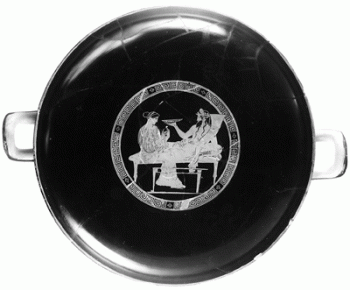American Journal of Archaeology | The Journal of the Archaeological Institute of America
You are here
Attic Vases in Etruria: Another View on the Divine Banquet Cup by the Codrus Painter
October 2006 (110.4)
Attic Vases in Etruria: Another View on the Divine Banquet Cup by the Codrus Painter
The Codrus Painter was a distinct cup painter active during the period in which the Parthenon was constructed. His repertory includes episodes from Attic mythology, athletics, and Dionysiac scenes, while his style was clearly influenced by contemporary sculpture. His vases were not distributed to Athenian or even to the local Greek clientele but instead were exported to other prosperous Mediterranean centers in Etruria, southern Italy, and farther west. The fact that the majority of his cups were found abroad, especially in Etruria, raises questions concerning the role of Attic vases in Italy and particularly the Etruscan interpretation of scenes depicted on them. This article examines, as a case study, the Divine Banquet cup by the Codrus Painter to more fully understand the relationship between Attic vases and their Etruscan context. The deep-rooted Etruscan tradition of banqueting and its importance in funerary customs are key factors in the analysis of the cup.
Attic Vases in Etruria: Another View on the Divine Banquet Cup by the Codrus Painter
By Amalia Avramidou
American Journal of Archaeology Vol. 110, No. 4 (October 2006), pp. 565–579
DOI: 10.3764/aja.110.4.565
© 2006 Archaeological Institute of America


